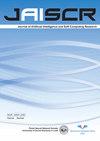使用机器学习工具实现心理健康护理的有效音乐治疗:人类情感推理和音乐流派
IF 2.4
3区 计算机科学
Q2 COMPUTER SCIENCE, ARTIFICIAL INTELLIGENCE
Journal of Artificial Intelligence and Soft Computing Research
Pub Date : 2020-12-03
DOI:10.2478/jaiscr-2021-0001
引用次数: 28
摘要
摘要音乐能够唤起人们不同的情绪,这反映在人们的生理信号中。情感计算的进步引入了计算方法来分析这些信号,并更详细地理解音乐和情感之间的关系。我们分析了24名参与者在听3种不同音乐类型的12首作品时收集的皮肤电活动(EDA)、血容量脉冲(BVP)、皮肤温度(ST)和瞳孔扩张(PD)。从每个信号中提取一组34个特征,并应用6种不同的特征选择方法来识别有用的特征。经验分析表明,具有从生理信号中提取的一组特征的神经网络(NN)在区分三种音乐流派方面可以达到99.2%的准确率。基于参与者对情绪的主观评价,该模型的分类准确率也达到98.5%。本文还确定了一些有用的特征,以提高分类模型的准确性。此外,我们引入了一种名为“姜饼动画”的新技术,将我们录制的生理信号可视化为视频,使这些信号更易于人眼理解,也适用于卷积神经网络(CNNs)等计算机视觉技术。总体而言,我们的研究结果为研究生理信号与音乐之间的关系提供了强有力的动力,这可以改善音乐治疗的心理健康护理和减少音乐性癫痫(我们的长期目标)。本文章由计算机程序翻译,如有差异,请以英文原文为准。
Towards Effective Music Therapy for Mental Health Care Using Machine Learning Tools: Human Affective Reasoning and Music Genres
Abstract Music has the ability to evoke different emotions in people, which is reflected in their physiological signals. Advances in affective computing have introduced computational methods to analyse these signals and understand the relationship between music and emotion in greater detail. We analyse Electrodermal Activity (EDA), Blood Volume Pulse (BVP), Skin Temperature (ST) and Pupil Dilation (PD) collected from 24 participants while they listen to 12 pieces from 3 different genres of music. A set of 34 features were extracted from each signal and 6 different feature selection methods were applied to identify useful features. Empirical analysis shows that a neural network (NN) with a set of features extracted from the physiological signals can achieve 99.2% accuracy in differentiating among the 3 music genres. The model also reaches 98.5% accuracy in classification based on participants’ subjective rating of emotion. The paper also identifies some useful features to improve accuracy of the classification models. Furthermore, we introduce a new technique called ’Gingerbread Animation’ to visualise the physiological signals we record as a video, and to make these signals more comprehensible to the human eye, and also appropriate for computer vision techniques such as Convolutional Neural Networks (CNNs). Our results overall provide a strong motivation to investigate the relationship between physiological signals and music, which can lead to improvements in music therapy for mental health care and musicogenic epilepsy reduction (our long term goal).
求助全文
通过发布文献求助,成功后即可免费获取论文全文。
去求助
来源期刊

Journal of Artificial Intelligence and Soft Computing Research
COMPUTER SCIENCE, ARTIFICIAL INTELLIGENCE-
CiteScore
7.00
自引率
25.00%
发文量
10
审稿时长
24 weeks
期刊介绍:
Journal of Artificial Intelligence and Soft Computing Research (available also at Sciendo (De Gruyter)) is a dynamically developing international journal focused on the latest scientific results and methods constituting traditional artificial intelligence methods and soft computing techniques. Our goal is to bring together scientists representing both approaches and various research communities.
 求助内容:
求助内容: 应助结果提醒方式:
应助结果提醒方式:


